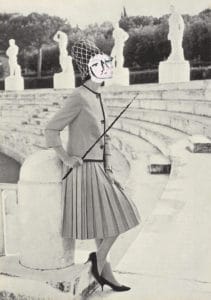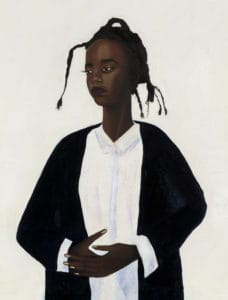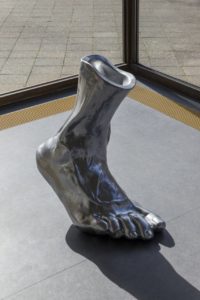~ She – Classicità ~
Artists: Zuzanna Czebatul, Barbara Falender, Maïmouna Guerresi, Irena Kalicka, Irini
Karayannopoulou, Magdalena Karpińska, Shana Moulton, Apolonia Sokol
Warsaw Gallery Weekend
30.09.2021-03.10.2021
Address:
Museum of the University of Warsaw
Tyszkiewich-Potocki Palace
Krakowskie Przedmieście 32, 00-927 Warsaw
Organization: Polana Institute
Exhibition is open only during Warsaw Gallery Weekend 2021
30.09–03.10.2021, 11-7 pm
The theme of classicism in the 1920s and 1930s came to the curators’ attention primarily through two exhibitions: ‚Realismus: Zwischen Revolution und Reaktion’ from 1981 and ‘On Classic Ground. Picasso, Léger, de Chirico and the New Classicism 1910-1930’, from 1990. Elena Pontiggia, the curator of the Italian version of the pan-European “return to order”, has found the most apt name for this tendency: modern classicità.
The temptation to search for harmony, classical ideas and Renaissance inspirations was not resisted by the likes of Picasso, Georges Braque, Carlo Carrà, Giorgio de Chirico. Although some artists in the 20th and 21st centuries, especially those from the Mediterranean basin, tried to use the motifs characteristic of antiquity and the Renaissance (Italian artists smuggled classical themes into pop-art and in the conceptual art and trans-avant-garde of the 1980s), these attempts have never matched the work of the painters of the so-called “return to order” of the 1920s and 1930s.
One hundred years later, contemporary female artists boldly formulate their own reception of antiquity – independent, and often in opposition to patriarchal visions. Their return to taking inspiration from antiquity and art history seems very mature, intelligently filtered through the problems of the present, and without the burden of having to worship the old masters. The contemporary classicità is a woman. The woman is not, as in the case of artists from the 1920s and 1930s, merely a pretext to paint a nude symbol, but as the subject, the main character. In this story, Ulysses is replaced by Penelope who returns to herself after a journey that is a metaphor of reaching maturity, wider perspective and self-awareness.
The exhibition in collaboration with The Museum of the University of Warsaw and Center for Research on Culture of Warsaw
1.Irini Karayannopoulou, Woman with statue #2, acrylic on print, 2021, Courtesy the Artist and Polana Institute
2.Maïmouna Guerresi, Virgin Of The Rocks, video, 1999, video still, Courtesy the Artist and Mariane Ibrahim Gallery
3.Irini Karayannopoulou, Woman with statue #1, acrylic on print, 2021, Courtesy the Artist and Polana Institute
4. Apolonia Sokol, Fanny, oil on linen, 95 x 65 cm, 2019, Courtesy the Artist and The Pill
5.Irena Kalicka, Untitled, 28 x 42 cm, 2021, Courtesy the Artist and Profile Foundation 6.Shana Moulton, Trapped-in Tower Syndrome, High defnition digital video, 2019, Courtesy the Artist and Gregor Steiger Gallery
7.Zuzanna Czebatul, Siegfried’s Departure I, plaster, iron, copper, 2018, Courtesy the Artist





